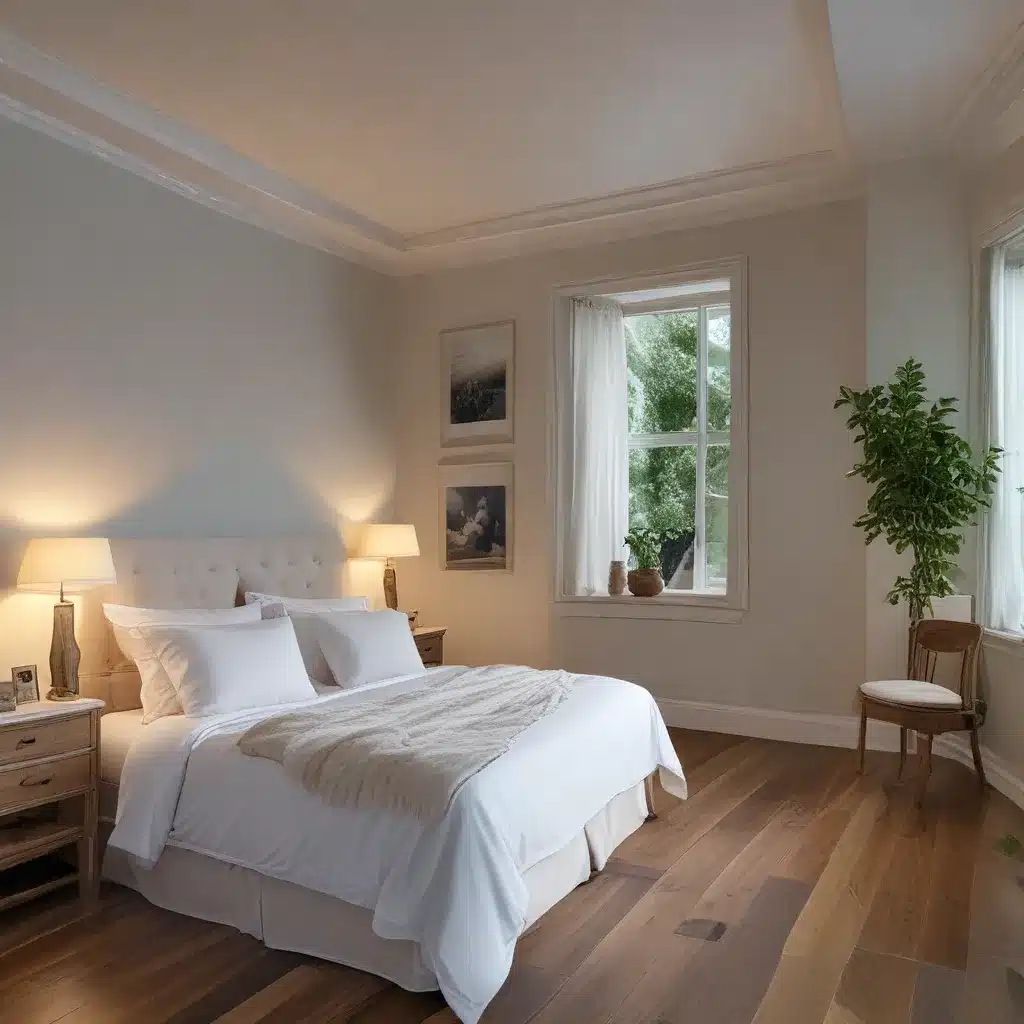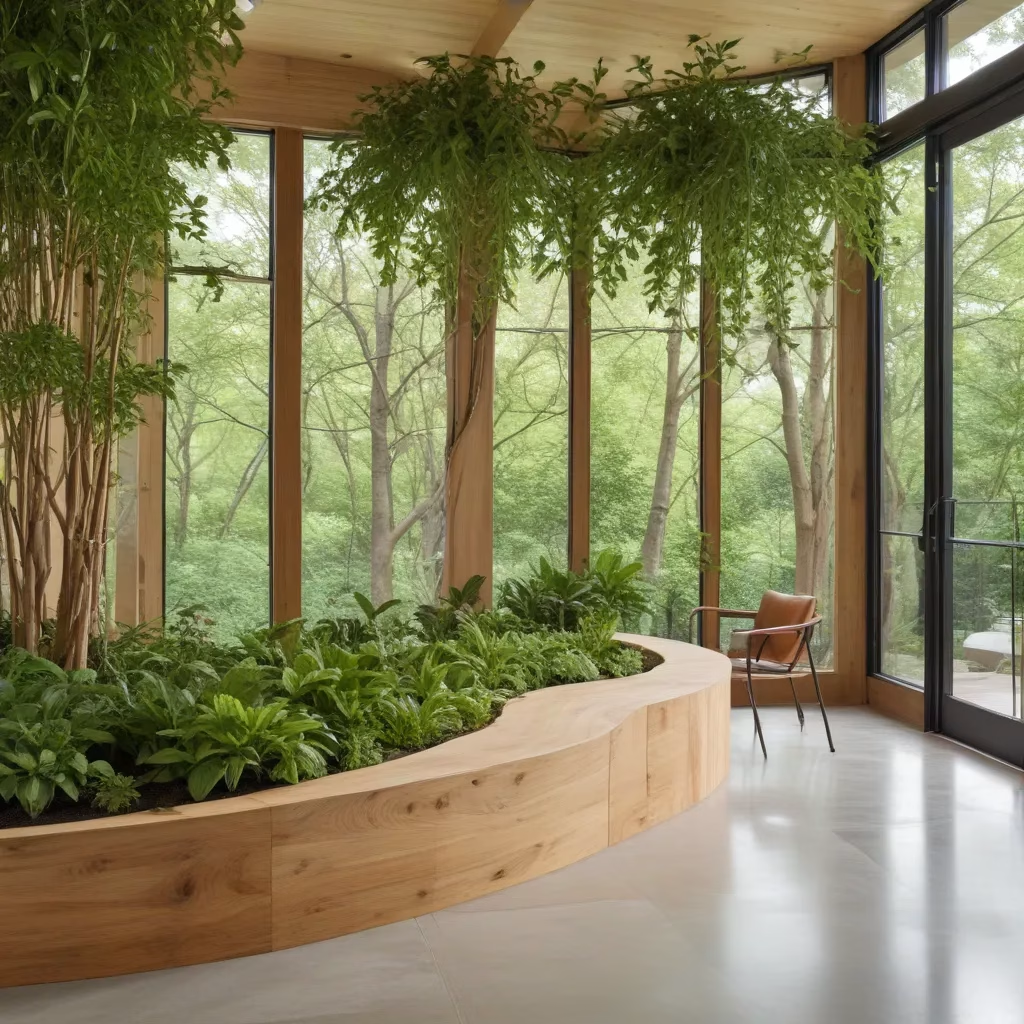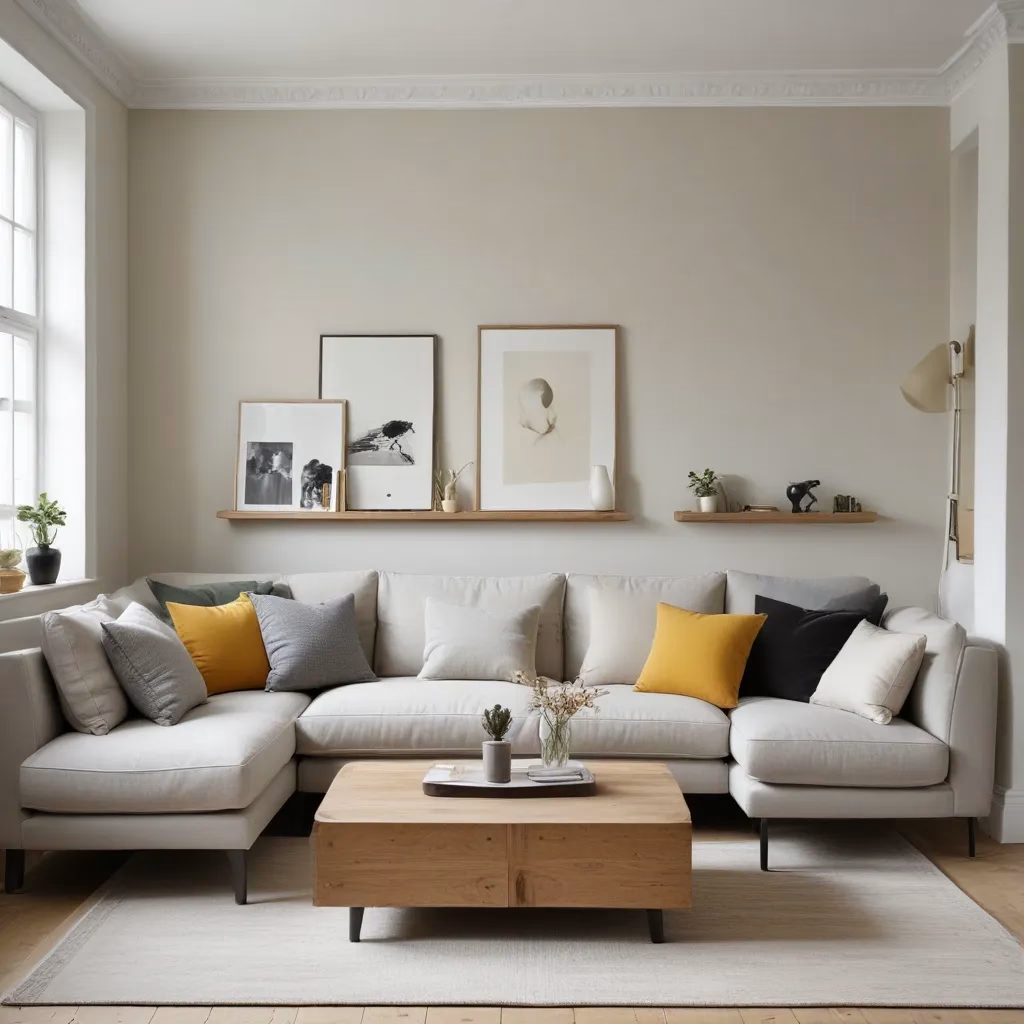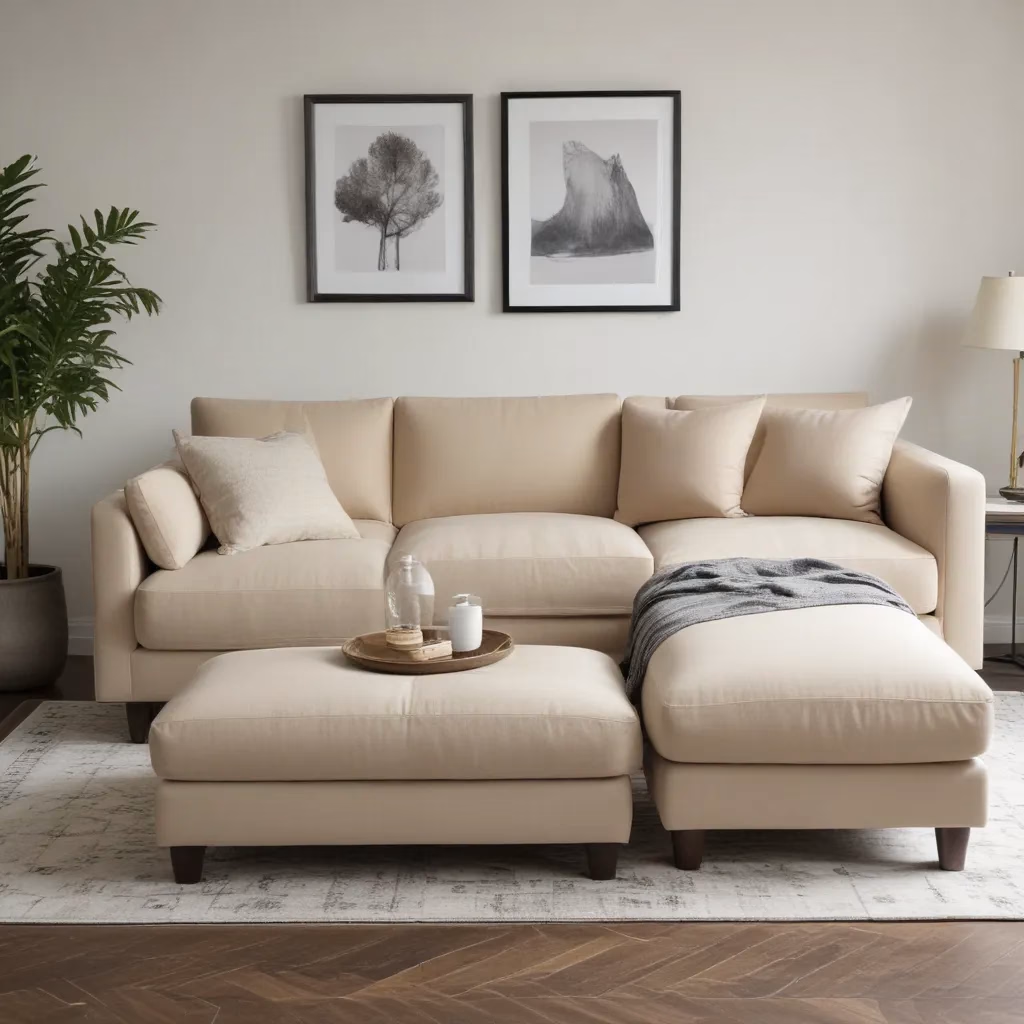Transforming Your Bedroom into a Soothing Sanctuary
In today’s fast-paced world, a good night’s sleep is a precious commodity. As the founder of Sofa Spectacular, a custom sofa company in the UK, I understand the importance of creating a serene and calming bedroom environment that promotes restful sleep. After all, our bedrooms should be our personal oases – a place to unwind, recharge, and escape the stresses of daily life.
That’s why I’m excited to share with you my top tips for designing a truly relaxing bedroom. Whether you’re embarking on a full-scale bedroom renovation or simply looking to spruce up your current space, these ideas will help you create a sanctuary that’s both visually stunning and conducive to a good night’s rest.
The Foundations of a Relaxing Bedroom
Let’s start with the basics – the foundation of any relaxing bedroom. According to interior designer Nichole Schulze, co-founder of the Los Angeles design firm cutlerschulze, it all begins with a well-thought-out bedroom layout. “A bedroom should be a serene and conducive to relaxing and restful sleep,” she explains. “With that in mind, we try to avoid overly complicated furniture layouts, furniture placed at odd angles, or beds under windows, all of which could be distracting and impair a good night’s sleep.”
As a general rule, Nichole suggests placing the bed on a wall away from or opposite the entry door. “It helps ensure there is enough circulation and a natural walkway around the bed,” she adds. This simple layout tweak can make all the difference in creating a calming and uncluttered atmosphere.
Embracing Nature’s Palette
When it comes to creating a relaxing bedroom, drawing inspiration from the natural world is a surefire way to cultivate a sense of tranquility. “Nothing calms the mind like time spent in nature,” observes Nichole, “so when looking to create a relaxing bedroom or a zen bedroom, seeking inspiration from the natural world is a great place to start.”
Take, for instance, the Kishi wall mural from Villa Nova. Featuring an array of soothing pastel shades reminiscent of flowing wild grasses, this mural creates a serene backdrop for sleep. By building a color scheme around the gentle pinks, greens, and beiges featured in the design, you can effortlessly infuse your bedroom with a sense of calming naturalism.
But it’s not just about the wall color – the textiles and furnishings you choose can also have a profound impact on the overall ambiance. “Wool provides luxury underfoot and helps to insulate your home, plus it absorbs sound to give a sense of calm and tranquillity,” explains Jodie Hatton, a residential design manager at Brintons. Opt for a neutral-toned, sustainable wool carpet or rug to add a cozy, grounding element to your space.
Mastering Lighting for Restful Sleep
Lighting is another crucial component in creating a relaxing bedroom environment. As Katie Glaister, founder of KH Design, explains, “To achieve a relaxing ambiance for both day and night, think table lamps, wall lights, and dimmable switches. High levels of lighting are not needed – think soft lighting and reading lights.”
In the bedroom designed by KH Design, Katie opted for a combination of Roman blinds and curtains, purposefully choosing a white fabric to make them more discreet. “We took care to ensure that the curtains for these three sets of windows did not dominate the room,” she says. “The Roman blind behind gives an extra layer of warmth in the winter.”
By layering your window treatments and incorporating dimmable lighting, you can easily control the light levels in your bedroom, creating a cozy, soothing atmosphere that’s perfect for winding down at the end of the day.
The Importance of Bedding and Textures
Of course, no relaxing bedroom would be complete without the all-important bed and bedding. As Chrissie Rucker, founder of The White Company, advises, “Invest in a high-quality bed and mattress that moulds and supports your body correctly, plus great-quality linen, duvet, pillows, and a cloud-like mattress topper.”
But it’s not just about the quality of the bedding – the textures you choose can also have a significant impact on the overall ambiance. “Wool has hypoallergenic and anti-bacterial properties, so by using it on the floor, it makes the air that we breathe cleaner and better,” Jodie Hatton explains. Consider layering your bed with a mix of luxurious fabrics, such as satin, velvet, and wool, to create a cocooning, sensory-rich experience.
And don’t forget the power of layering. As the seasons change, having a selection of throws and blankets on hand can not only provide extra warmth but also add depth and visual interest to your bedroom design.
Bringing the Outdoors In
One of the most effective ways to cultivate a sense of calm in the bedroom is to embrace the natural world. “Bringing the outside in is a brilliant way to bring a sense of calm to a bedroom,” says the Homes & Gardens team. “If you’re lucky enough to have a large rural vista, then showcase it as part of your bedroom design.”
In the large main bedroom featured in the article, the homeowners arranged the bed to face the window and added a bespoke window seat, leaving space beneath for storage. By framing the stunning outdoor view, they created a serene, nature-inspired sanctuary that’s perfect for relaxation and rejuvenation.
Even if you don’t have a grand rural vista, you can still bring the outdoors in through the strategic placement of plants. According to the NASA Clean Air Study, varieties such as English Ivy and Peace Lily can help purify the air, reducing levels of harmful pollutants and creating a healthier sleep environment.
Putting It All Together: A Cohesive Design Approach
When it comes to creating a truly relaxing bedroom, it’s not enough to simply tick off a checklist of design elements. As interior designer Camilla Hampton explains, it’s about taking a holistic approach and considering the overall flow and energy of the space.
“Use warm, gentle colors and textures to create a space you want to retreat into and let go of the day’s stresses,” Camilla advises. “Ensure the layout helps the energy flow around the room.” A high bed, for instance, can make you feel like you’re “climbing up and away from the floor,” adding to the sense of escape and tranquility.
Achille Salvagni, another renowned designer, emphasizes the importance of layering different materials and tonal depths within a neutral color scheme. “The best neutral space will have a mix of different palettes of whites, creams, and taupes, as well as a mixture of materials that play and challenge one another within the single-tone interior,” he explains.
By taking a holistic approach and weaving together the various design elements – from the color palette and lighting to the textures and furniture placement – you can create a truly cohesive and relaxing bedroom that’s tailored to your unique needs and preferences.
Effortless Updates for an Instant Sense of Calm
Of course, not everyone has the time or resources for a full-scale bedroom renovation. But that doesn’t mean you can’t infuse your space with a sense of tranquility. According to Kate Salmon, our head of home and gift buying at Oliver Bonas, even subtle updates can make a big difference.
“Aroma diffusers are particularly effective,” Kate suggests, “as they are designed to mist and infuse a room with soothing fragrance oils.” A few strategically placed candles can also work wonders, casting a warm, calming glow throughout the space.
Another easy way to create a more relaxing atmosphere? “Layering cushions on the bed combined with a sumptuous, soft-touch velvet quilted bedspread can really help create a sense of tranquility,” Kate adds.
So, whether you’re embarking on a full-scale bedroom renovation or simply looking to inject a little more serenity into your space, these tips and tricks will help you transform your bedroom into a true oasis of relaxation. Sweet dreams, indeed!




